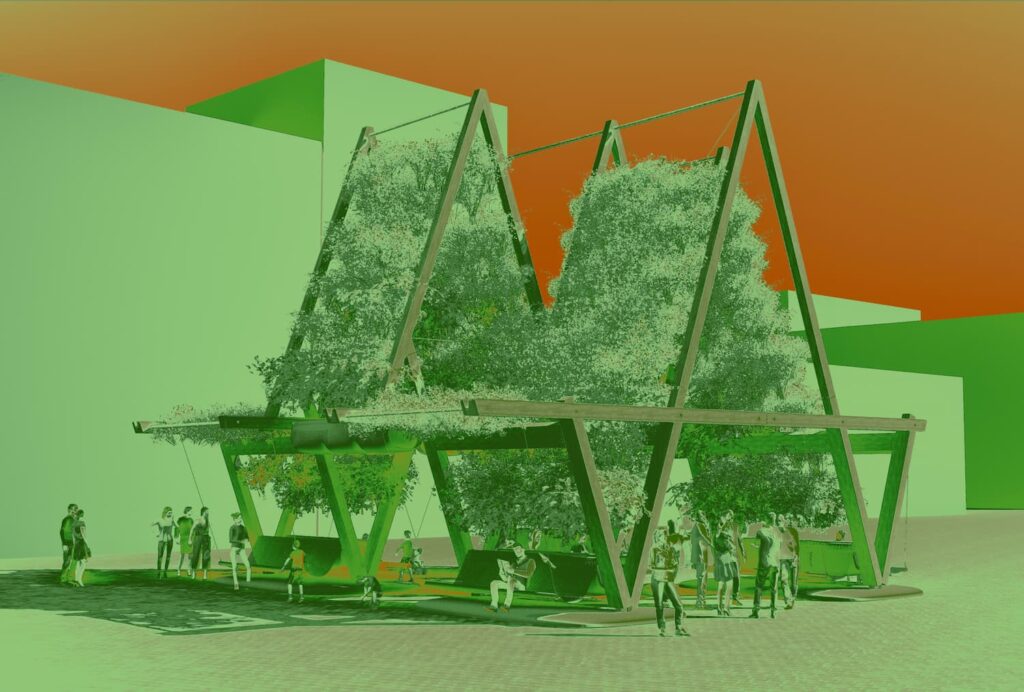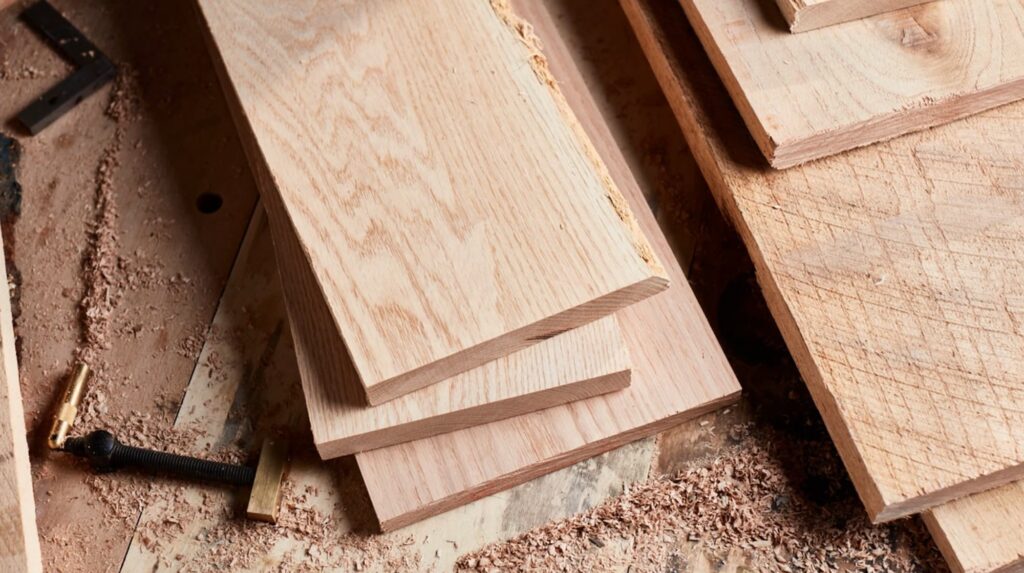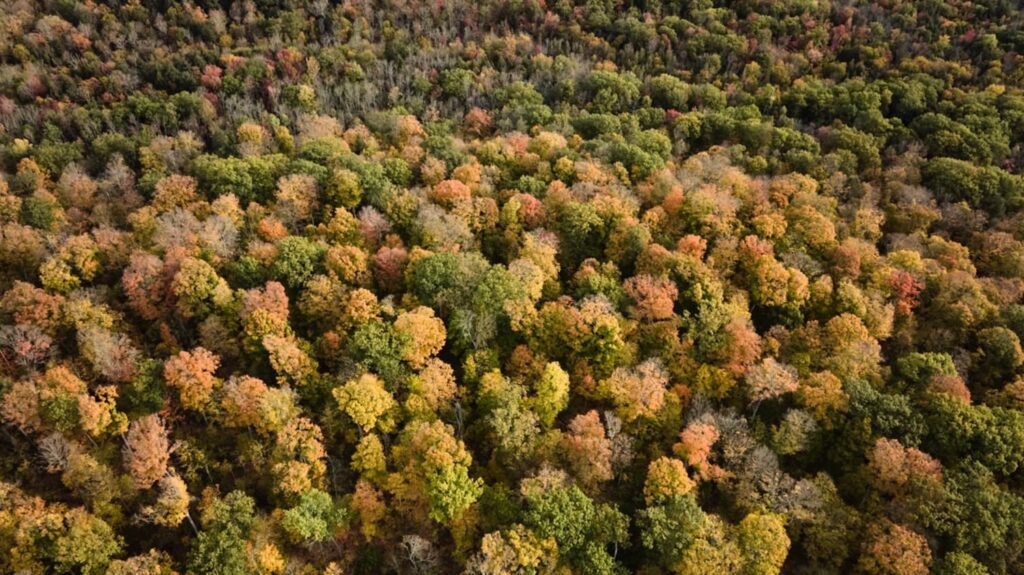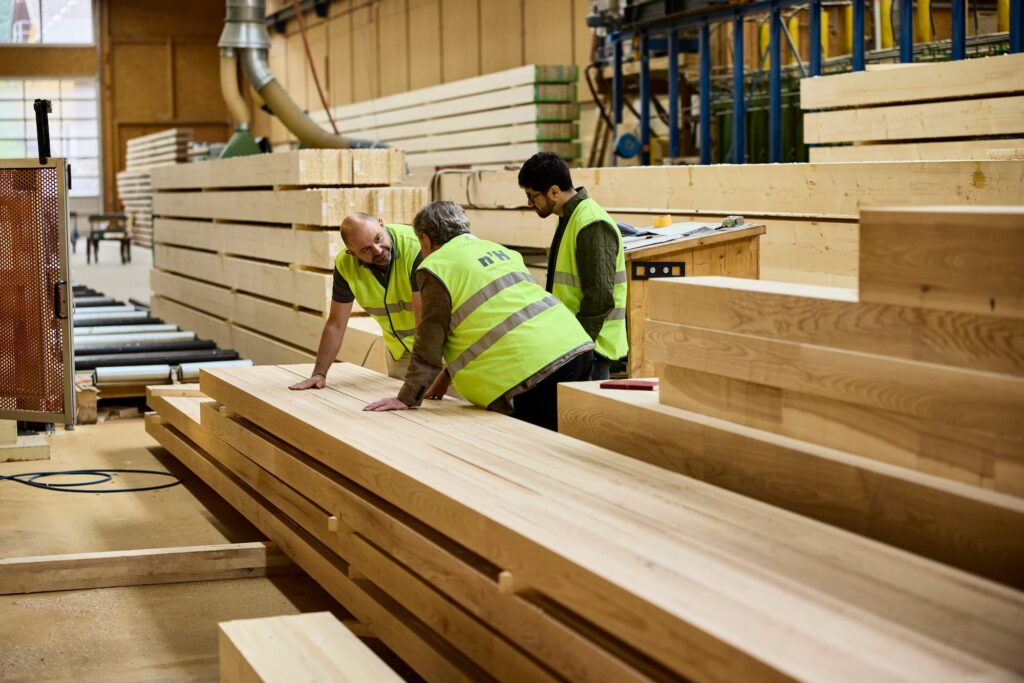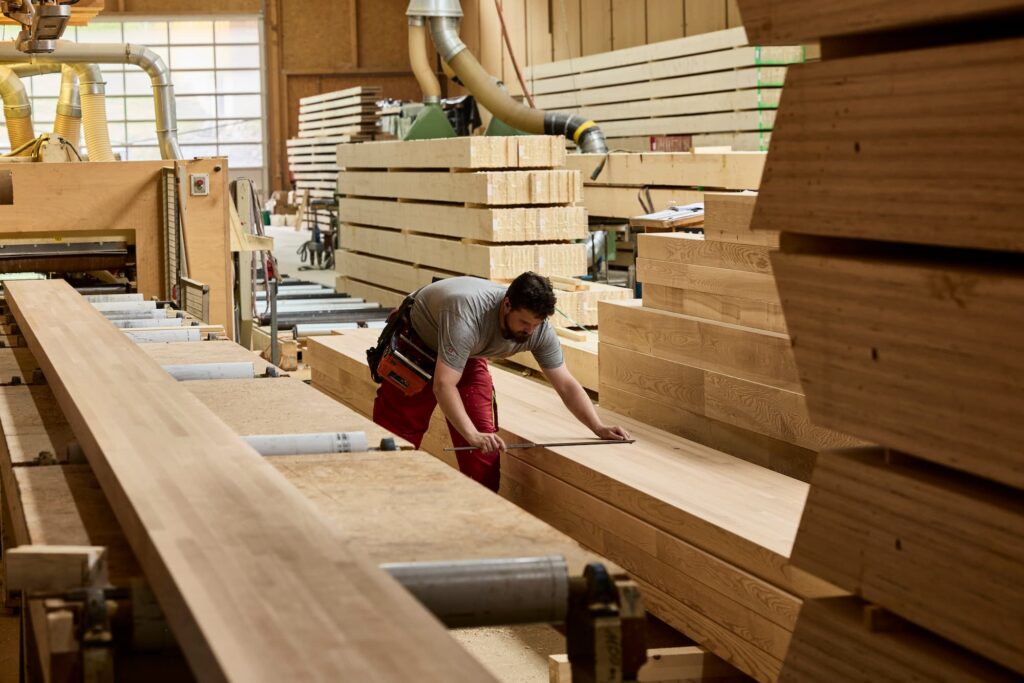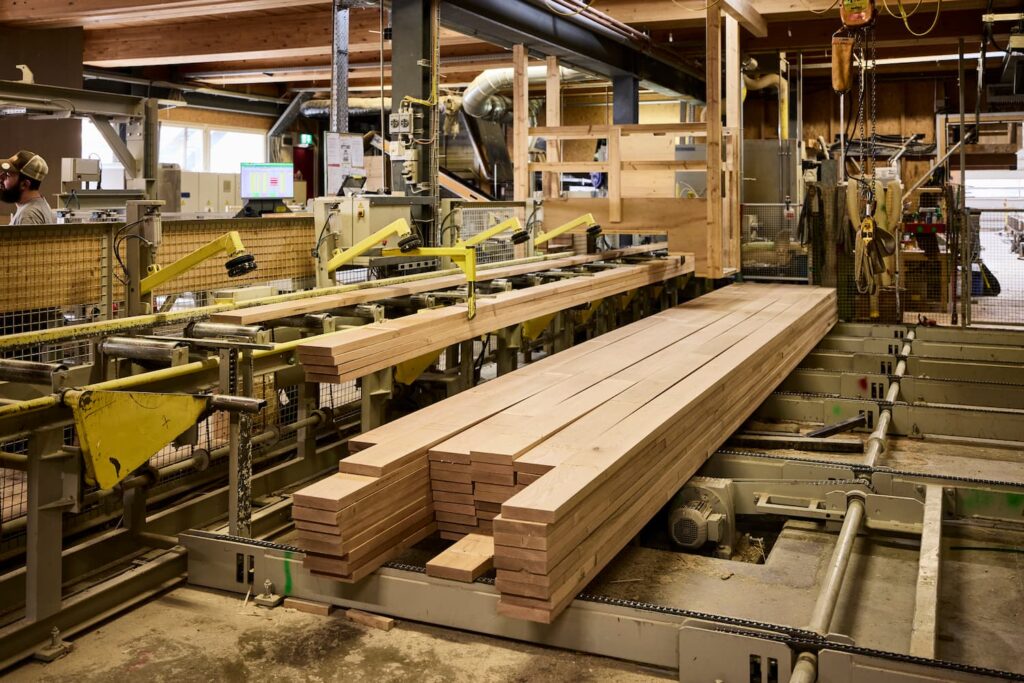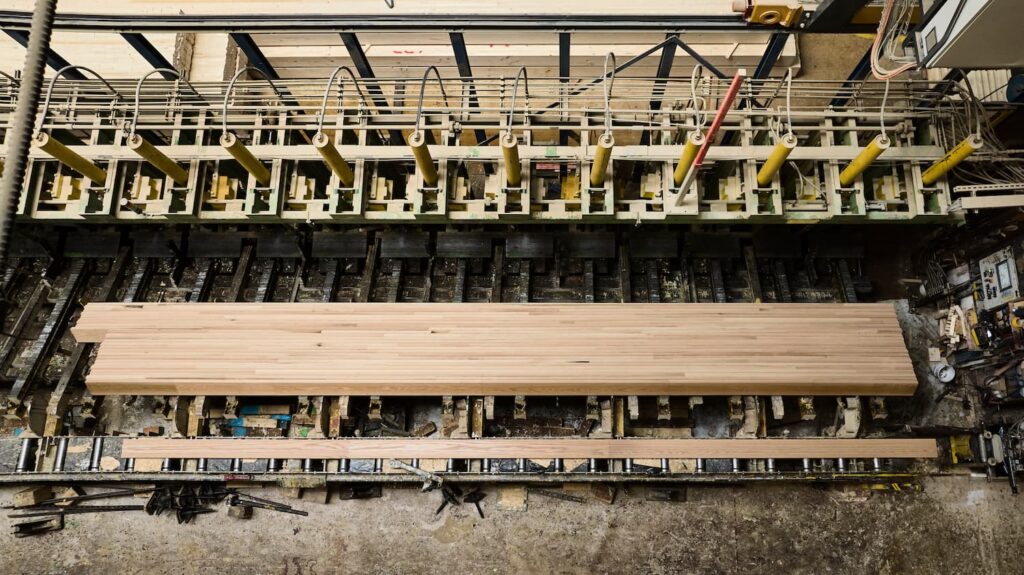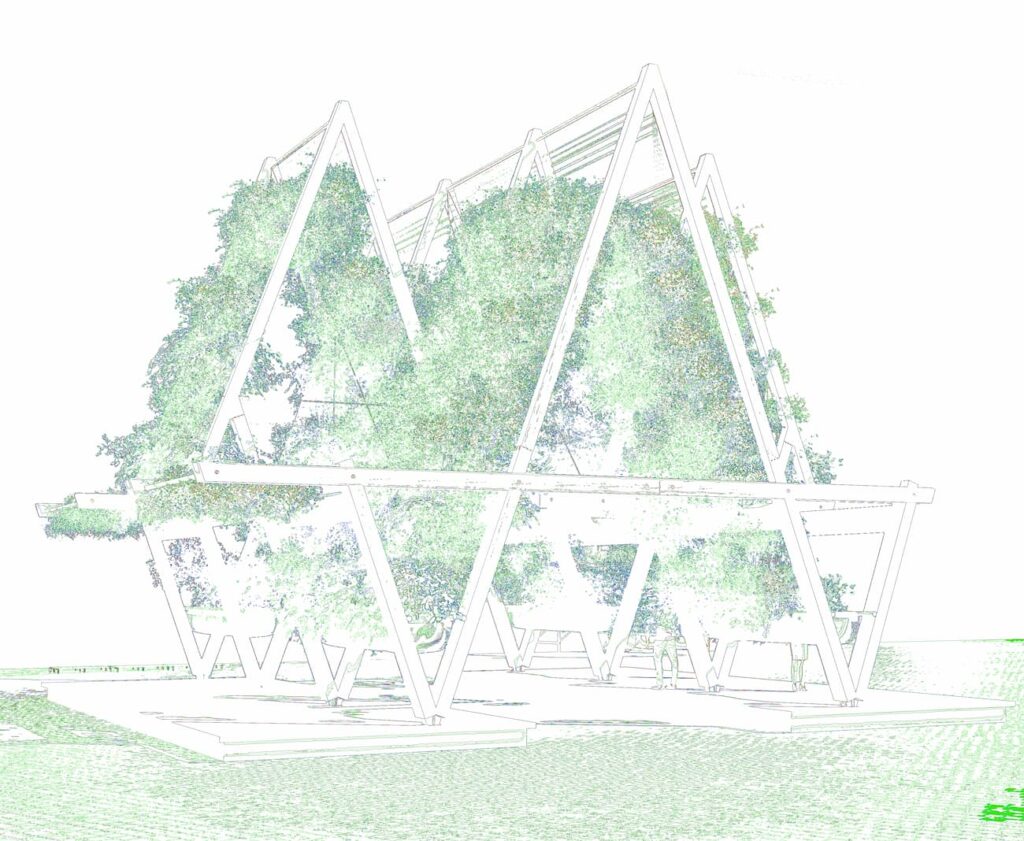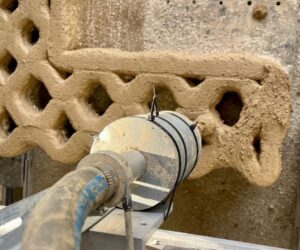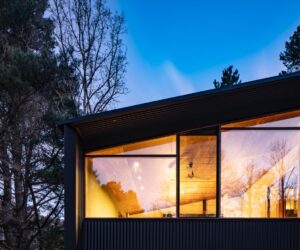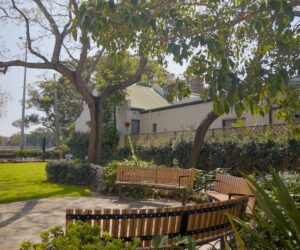Vert: Modular Urban-Cooling Structures Unveiled For London Design Festival
Devised in a three-way collaboration between Stefan Diez’s industrial design studio Diez Office, the American Hardwood Export Council (AHEC), and urban greening specialists OMCºC, Vert is an experimental proposition for a modular structure that can address both rising temperatures rising and intensifying heatwaves, as well as dwindling urban biodiversity.
Unveiled at Chelsea School of Art during London Design Festival, the project proposes a timber structure that helps to cool the city while integrating easily into its existing infrastructure. Tall sails covered in climbing plants work to fix carbon dioxide in the air while creating areas of cooling shade – sheltered spaces for people to pause. Built from sustainable materials, Vert combines aesthetic appeal with tangible environmental benefits, and represents a transformative approach to urban development.
Constructed from an engineered hardwood, red oak glulam, the structure consists of a series of timber triangles holding suspended biodegradable nets. These provide a framework for climbing plants, rooted in textile planters at the base of each net. The sails are greened with around 20 different plant species, creating a living ecosystem that enriches local biodiversity, serves as a habitat for essential insect populations, aesthetically enriches the urban landscape, and provides a sheltered space where visitors can gather and relax.
“The structure performs as a ‘Greening Machine’, while also making urban spaces more harmonious and pleasant to live in from an aesthetic point of view. We wanted Vert to break the monotony of our urban environment.”
– Stefan Diez, Director & Founder, Diez Office
Robust, modular, flexible, sustainable
Over the last decade and a half, AHEC has presented a host of experimental structural projects that showcase innovations in hardwood, such as hardwood CLT. Vert continues this important work, this time focusing on highlighting the potential of red oak glue-laminated timber (glulam).
Having previously supported Stefan Diez in his teaching work, AHEC and the Munich-based designer began exploring the possibility of collaboration at 3daysofdesign in Copenhagen in 2023. Diez Office had been working with OMCºC on their urban-greening solution that would reduce the carbon footprint of the city in the process. This is the role typically performed by trees, but in an era of acute climate change, climbing plants can be more effective as they grow many times faster, require less root space, and can be ‘harvested’ annually to be turned into biochar or recycled as raw material for the generation of energy.
The system combines AHEC’s timber knowledge with Studio Diez’s design expertise and OMC°C’s in depth understanding of planting and irrigation technology, substrate performance, wind loads, and all the other technical details integral to the installation of the structure in public spaces.
Vert’s triangular shape is fundamental to the structure’s performance, allowing for a robust construction that uses minimal materials while being capable of resisting wind from all angles and absorbing the weight of the plants. The triangle also lends itself to modularity, allowing for the system to be extended or to change in direction to suit different settings, without affecting the resistance of the structure.
In consultation with AHEC, Diez Office and OMC°C were able to identify red oak as the optimum material to use for the project, in terms of both structural performance and ecological credentials. Diez Office has been enthusiastic about the aesthetic possibilities and environmental benefits of red oak since learning about the species. Since then, the studio has experimented with the timber, first as a furniture material. For this project the whole construction team recognised its structural potential, expanding its application to larger scales. This has been made possible through the expertise of Bollinger + Grohmann structural engineers and Neue Holzbau, a Swiss company known for its innovation in engineering and manufacturing complex timber structures, often in hardwood.
Despite red oak being sustainable and constituting a sizable 18% of North American hardwood forests, it is underutilised in Europe. Increased use of red oak would reduce the stress on more widely used species and provide designers and customers with an enriched palette of timber materials to choose from.
Because red oak is denser and more stable than the standard construction timbers, less material is required, minimising the visual prominence and footprint of the structure while maintaining high structural performance. The use of red oak also allows for more precise and long-lasting joints that enable the structure to be disassembled, moved, repaired and/or reassembled many more times than standard construction materials, supporting the longevity of the piece.
“Vert offered a tangible solution for urban greening, integrating sustainable materials and modular timber construction to create a multifunctional space. The idea perfectly aligned with our commitment to sustainability and our mission to highlight red oak’s structural and environmental characteristics, inspiring the design and architectural community to consider it as a valuable material option.”
– David Venables, European Director for AHEC
The structure is predominantly made from red oak glulam – an engineered material created by finger jointing and laminating multiple grain-aligned layers of timber to enhance strength and stability. This enables the creation of large, structurally robust components suitable for modern construction. Vert also features a decked floor beneath the sails made from thermally modified red oak. The chemical-free heat treatment alters the wood’s cellular structure, enhancing its durability and stability and increasing its resistance to decay and insect attacks, which makes it ideally suited to use outdoors in urban spaces such as this.
The case for sustainable timbers
As well as offering a potential urban-cooling solution and acting as visually enriching street furniture, Vert makes a compelling case for the use of alternative wood materials to the limited library of species typically used in design and construction, encouraging greater diversity and resilience in the world’s forests.
Due to sustainable forestry practices, the standing timber volume of American forests has more than doubled over the last 50 years – a remarkable reforestation success story. The forests provide critical habitats for wildlife, recreational spaces, and sources of economic growth for local communities. Their trees – and the products made from their timber – play a significant role in combating climate change through carbon sequestration.
AHEC believes that timber and design industries have important contributions to make in the battle against climate change. Vert’s use of red oak demonstrates a valuable material option that gives architects a sustainable solution with great structural properties, while also tackling some of the most immediate impacts of climate change – specifically, rising temperatures and diminishing biodiversity in global cities.
The cooling power of climbing plants
Vert is projected to cool the surrounding airspace by as much as 8ºC, cast four times more shade than a 20-year-old tree, and produce as much biomass as an 80-year-old lime tree – all through the use of climbing plants grown over the course of a single summer.
“The project is intended to inspire urban planners, architects and designers to address climate change and, above all, to work together to develop interdisciplinary solutions. We want to show that you can implement large-scale greening even in the enclosed spaces of the inner city. Our aim is to create a beautiful place for LDF: a cool, shady, flowering, rustling, buzzing place where you can be close to nature, a garden for insects and people in the middle of the city – somewhere that does you good.”
– Nicola Stattmann, Director & Founder, OMCºC
This project aligns with London’s ambitious climate goals, including the Mayor’s directives to increase tree cover by 10% by 2050. Vert presents a blueprint for sustainable urban development in the age of climate crisis, blending innovative design with environmental stewardship to create liveable, resilient and biodiverse urban spaces.
Vert will be on show at Chelsea College of Art throughout London Design Festival, 14–22 September, and will remain in place for four weeks.
For more information, visit www.americanhardwood.org
